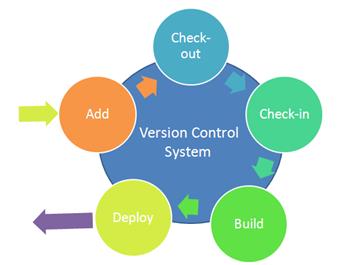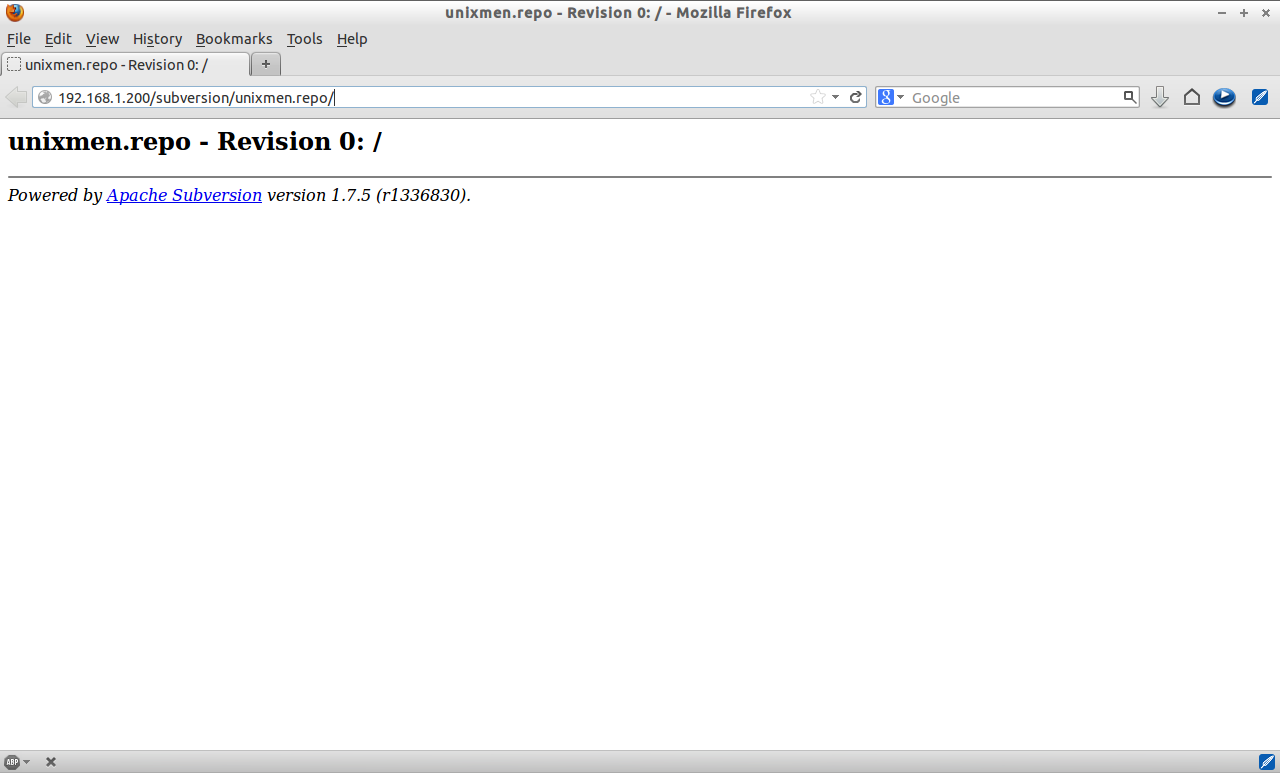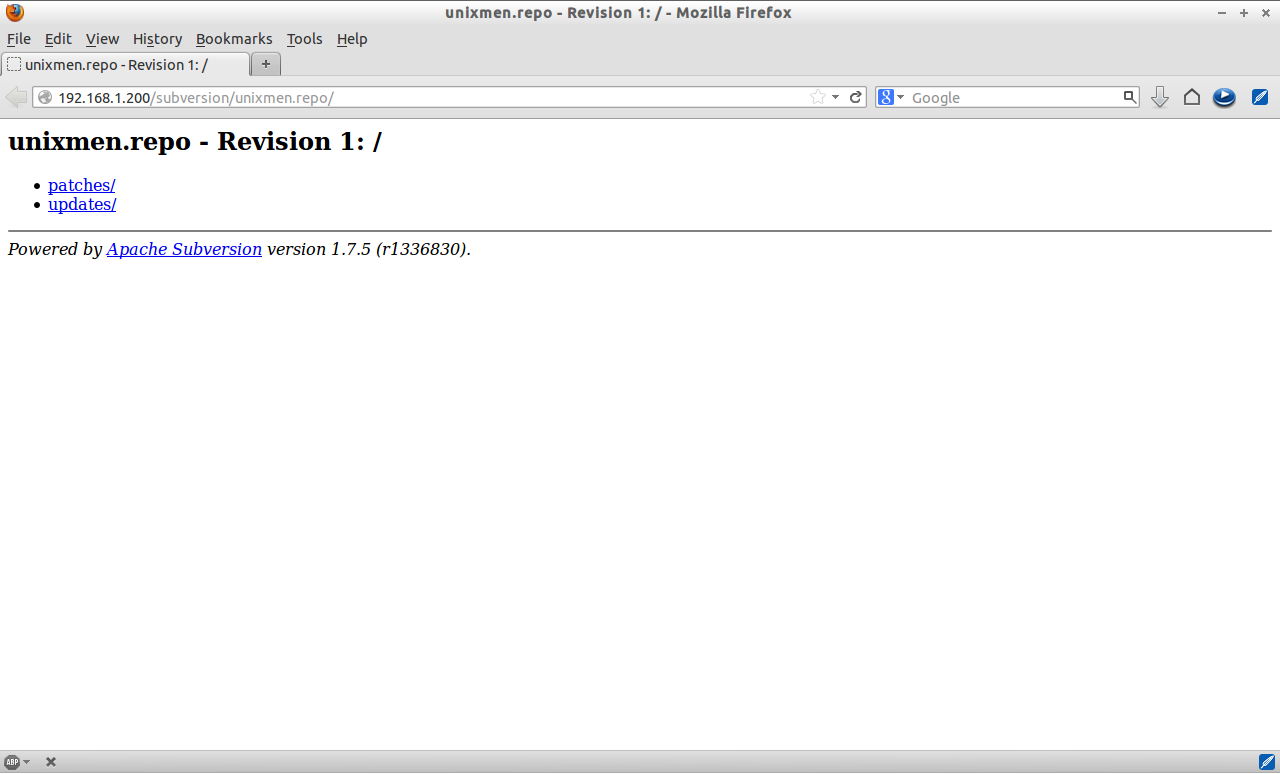Subversion is a free and open-source version control system (VCS). It manages files and directories, and the changes made to them over time. This allows you to recover older versions of your data or examine the history of how your data changed.
Subversion can operate across networks, which allows it to be used by people on different computers. Subversion is used by developers, and advanced users who need the very latest changes to the software (before releases occur).
Install Subversion
On Ubuntu 13.04, perform the following to install:
sk@server:~$ sudo apt-get install subversion libapache2-svn apache2
Configure Subversion
Create a directory for where you want to keep your subversion repositories:
sk@server:~$ sudo mkdir /subversion sk@server:~$ sudo chown -R www-data:www-data /subversion/
Open the subversion config file dav_svn.conf and add the lines at the end as shown below. Comment or delete all the other lines in the config file:
sk@server:~$ sudo nano /etc/apache2/mods-enabled/dav_svn.conf [...] #</Location> <Location /subversion> DAV svn SVNParentPath /subversion AuthType Basic AuthName "Subversion Repository" AuthUserFile /etc/apache2/dav_svn.passwd Require valid-user </Location>
Now create a SVN user using the following command. Here I create a new SVN user called sk with password ubuntu:
sk@server:~$ sudo htpasswd -cm /etc/apache2/dav_svn.passwd sk New password: Re-type new password: Adding password for user sk
Use -cm parameter for the first time only, you can create another user with only -m parameter.
Create Subversion repository called unixmen.repo under /subversion directory:
sk@server:~$ cd /subversion/ sk@server:/subversion$ sudo svnadmin create unixmen.repo
Restart Apache service:
sk@server:~$ sudo /etc/init.d/apache2 restart * Restarting web server apache2 ... waiting [ OK ]
Test Subversion
Open the browser and navigate to http://ip-address/subversion/unixmen.repo. Enter the SVN username and password which you have created in the earlier step. In my case, username is sk and password is ubuntu.
Now you will able to access your repository.
Disable Anonymous Access
Open the file svnserve.conf file and make the changes as shown below:
sk@server:~$ sudo nano /subversion/unixmen.repo/conf/svnserve.conf [...] ## Uncomment and set to 'none' ## anon-access = none [...] ## uncomment ## authz-db = authz [...]
Create additional Directories(Links) in Subversion Repository
Create one or more directories:
sk@server:~$ sudo mkdir templates sk@server:~$ cd templates/ sk@server:~/templates$ sudo mkdir updates sk@server:~/templates$ sudo mkdir patches
Now import them to your repository:
sk@server:/templates$ sudo svn import -m 'Initial import' /templates/ http://192.168.1.200/subversion/unixmen.repo/ Authentication realm: <http://192.168.1.200:80> Subversion Repository Password for 'root': Authentication realm: <http://192.168.1.200:80> Subversion Repository Username: sk Password for 'sk': ----------------------------------------------------------------------- ATTENTION! Your password for authentication realm: <http://192.168.1.200:80> Subversion Repository can only be stored to disk unencrypted! You are advised to configure your system so that Subversion can store passwords encrypted, if possible. See the documentation for details. You can avoid future appearances of this warning by setting the value of the 'store-plaintext-passwords' option to either 'yes' or 'no' in '/home/sk/.subversion/servers'. ----------------------------------------------------------------------- Store password unencrypted (yes/no)? Please type 'yes' or 'no': yes Adding updates Adding patches Committed revision 1.
Now check for the changes in your repository. Navigate to http://192.168.1.200/subversion/unixmen.repo. You will see the newly created directories in your repositories.
That’s it.








